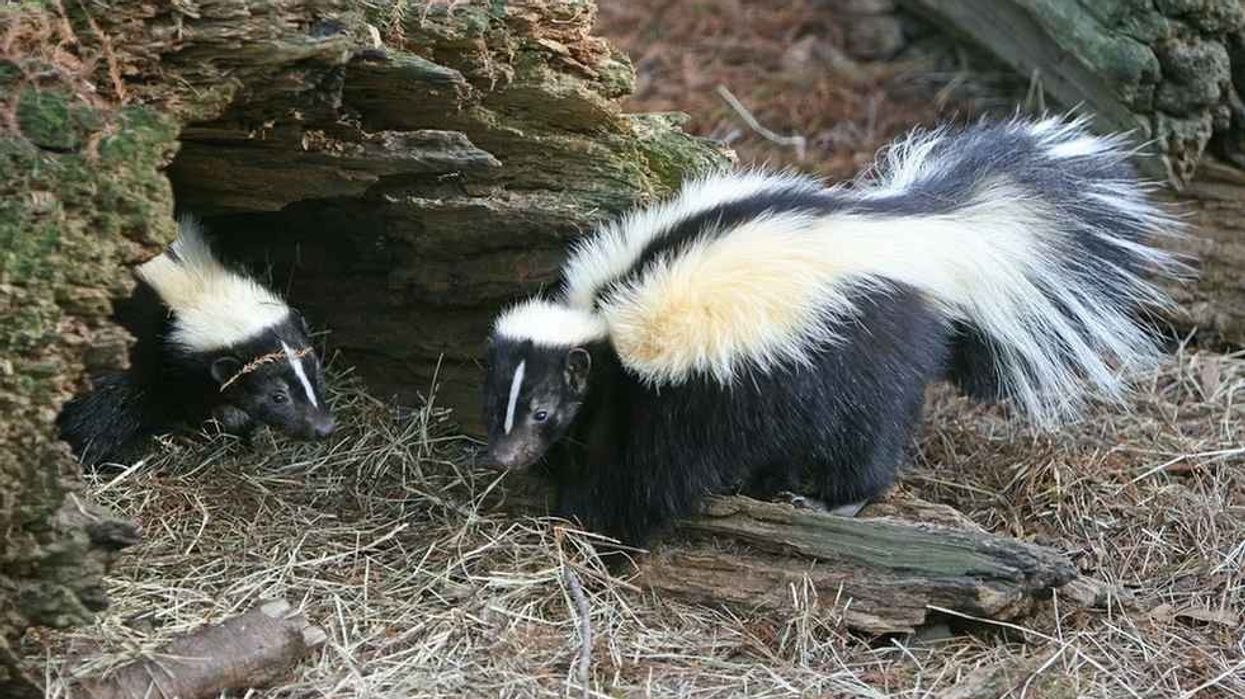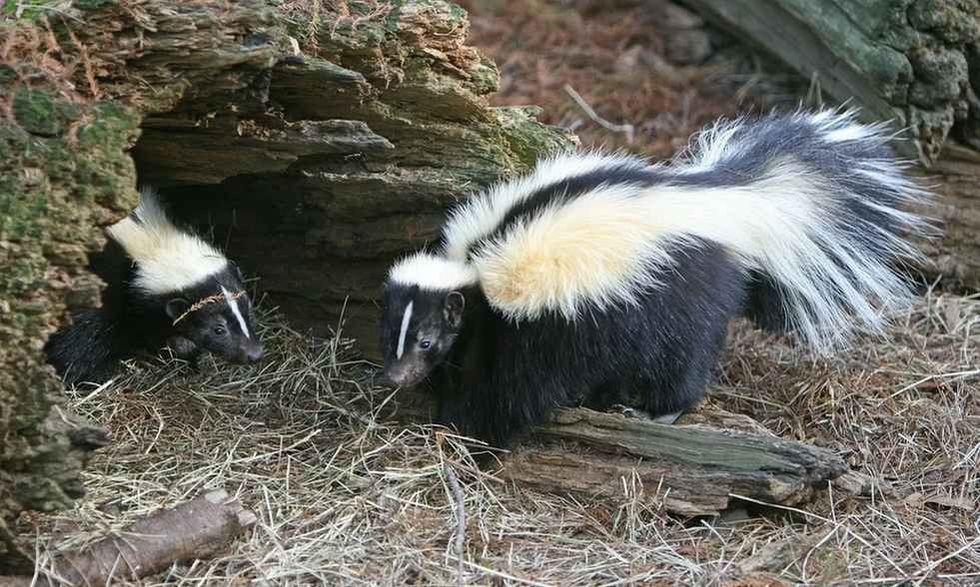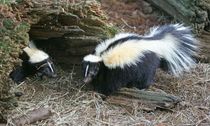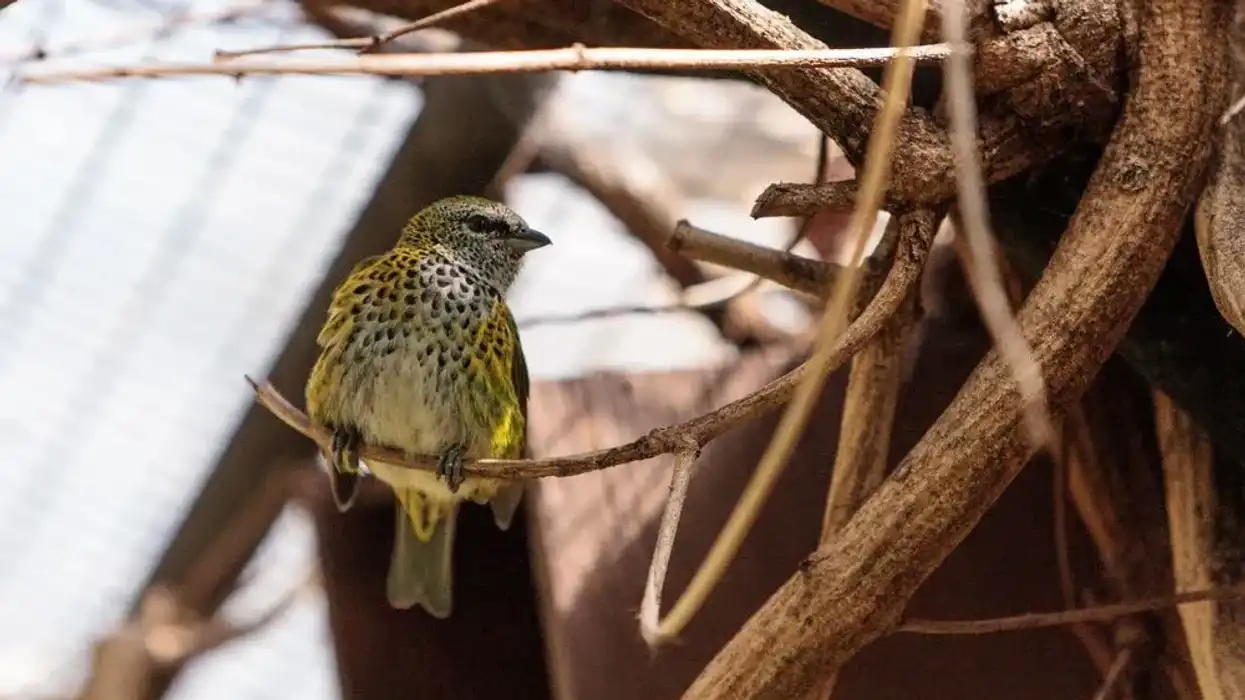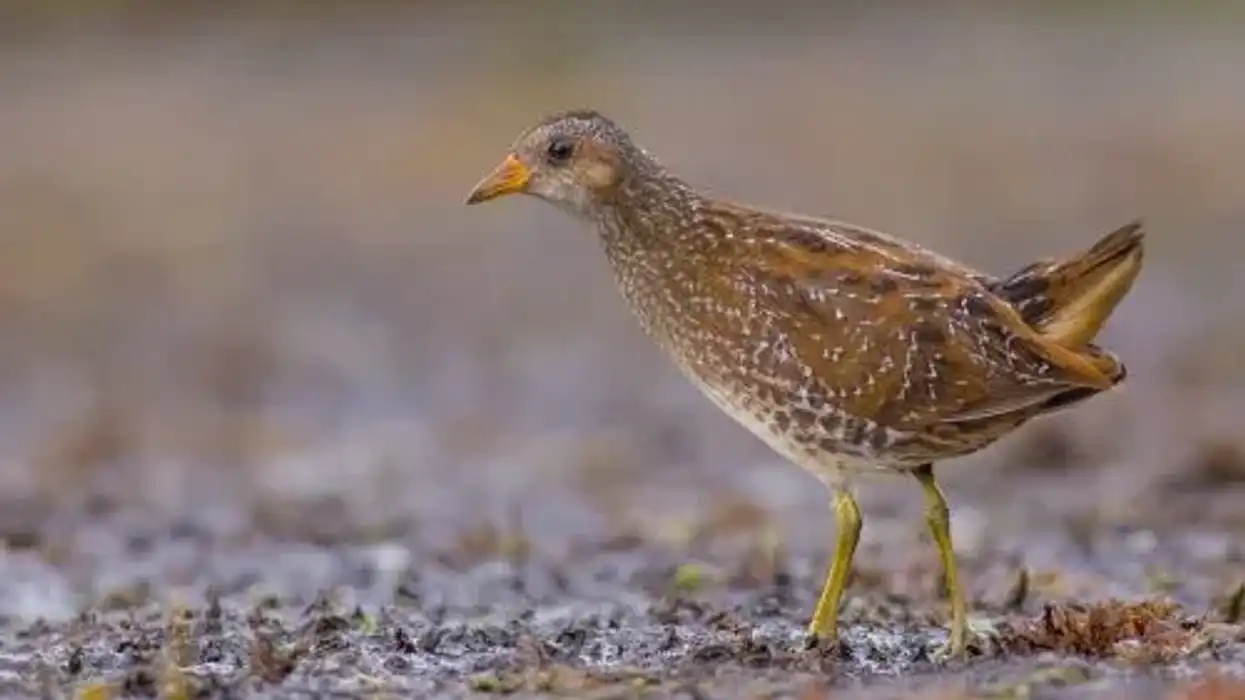Fun Striped Skunk Facts For Kids
Striped Skunks (Mephitis mephitis) are a type of skunk found in North America, especially throughout the United States of America.
Like the other skunks, the Striped Skunk is also known for the sulfur-alcohol compound it emits from its scent glands to temporarily throw off the predators. Funnily enough, the Striped Skunk's scientific name, Mephitis mephitis, is derived from the Latin word 'mephit,' which means bad odor.
The Striped Skunk was once hunted and preyed upon by humans because of the expensive pelt that could be made from their fur.
The distinct physical characteristics of the Striped Skunk made its fur even more valuable. As strange as it may sound, the Striped Skunks were actually kept and tamed by humans, especially those who work in agricultural fields, as the skunks could easily prey on small rodents who would destroy the fields.
Read on if you are interesting in learning more about this stripey little animal.
If you like this article with amazing Striped Skunk facts, then check out our articles with facts about ringtail possum and fennec fox.
Striped Skunk Interesting Facts
What type of animal is a Striped Skunk?
A Striped Skunk, whose scientific name is Mephitis mephitis, is an animal that is a type of skunk.
What class of animal does a Striped Skunk belong to?
The Striped Skunk belongs to the mammal class of animals.
How many Striped Skunks are there in the world?
While their exact number is unknown due to lack of population counting, according to the International Union For Conservation Of Nature (IUCN), the current population trend of the Striped Skunk is considered to be stable. They are quite commonly found in the usual places where they inhabit, but the exact estimate is unknown.
Where does a Striped Skunk live?
The Striped Skunk scientific name is Mephitis mephitis and it is most commonly found in the continent of North America. Within the continent, this animal is dispersed throughout Southern parts of Canada, Northern Mexico, and the entirety of the United States of America.
However, the Striped Skunk is not seen in the desert areas of Nevada and Utah in the United States of America but can be seen again in Northern Mexico.
What is a Striped Skunk's habitat?
Striped Skunks prefer to create their dens or homes inside hollowed logs or brush piles. Sometimes for ground-nesting, they may also take over burrows created by other animals.
In populated areas with a lot of infrastructures, Striped Skunks can also be found in abandoned, empty buildings or hollowed logs inside trees. In the wild, the Striped Skunk lives in a variety of habitats such as mountains, dense forest, meadows, open fields, or even backyards in suburban spaces.
Who do Striped Skunks live with?
Striped Skunks are usually solitary animals, and they prefer to live on their own. However, during the winter months, many Striped Skunks get together in communal dens to survive the harsh winter together. Even though they do not strictly hibernate, the skunks share body heat and warmth.
How long does a Striped Skunk live?
The average lifespan of a Striped Skunk is around three years in the wild. They can even live up to 15 years in captivity under human care.
How do they reproduce?
The Striped Skunks are polygamous in nature, and they do not mate for life. Each male can mate with multiple females in the breeding season, which lasts through the months of February and April.
Female Striped Skunks give birth to six to eight babies once a year only during the month of May or June. The period of gestation for the female Striped Skunks lies between 59-77 days.
Striped Skunks become sexually mature when they are approximately ten months old. The young Striped Skunks are born without their fur, but they still have the striped pattern.
Within eight days of birth, the baby Striped Skunks can start emitting the spray. Within three weeks of birth, the young Striped Skunks can get their eyes open.
After birth, they live with their mothers and start learning how to hunt and eat. Once they have learned how to hunt, they soon scatter away from their mothers and live alone.
What is their conservation status?
According to the group the International Union for Conservation of Nature (IUCN), Striped Skunks have been classified as a part of the Least Concern category. This means that they are not in immediate danger or facing the threat of extinction.
Striped Skunk Fun Facts
What do Striped Skunks look like?
Striped Skunks are famous for their thick black fur, which has a white stripe that goes on till the end of its tail. Some skunks have completely black tails, while some may have a white patch.
The Striped Skunk is distinguishable due to the small white bar on the top of its conical head to the nose. Striped Skunks have short, small limbs and semi-webbed toes. Their tails are quite heavily furred and bushy.
While there might be Striped Skunks who are of different colors such as red or brown, the most commonly seen Striped Skunks are usually completely black in color with the identifiable white marks on their body and its head.
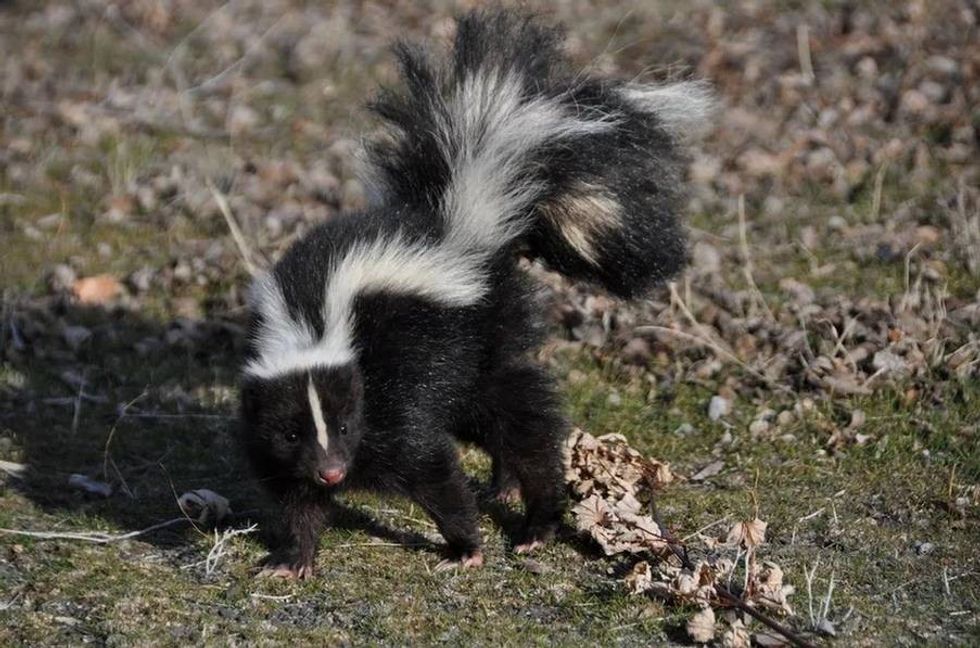
How cute are they?
Striped Skunks are actually cute if you can ignore the fact that they emit a foul-smelling spray! Striped Skunk (Mephitis mephitis) is a small animal with a huge, bushy tail.
They also have short limbs, which adds to their cuteness. There have been many Striped Skunk cartoon characters that have made the animal even more endearing to people. However, even if they look physically cute, they are definitely not cute if you look at their temperament and behavior.
How do they communicate?
Striped Skunks, whose scientific name is Mephitis mephitis, are a pretty vocal animal and make a variety of noises to get each other's attention and communicate with others. Striped Skunks use sounds like hissing, screeching, growling, and twittering during social interactions or when they feel threatened.
They can also make a low cooing sound depending upon the situation. Striped Skunks also use body language to express their emotions.
Sometimes it can be seen arching its back, shuffling its foot, or stamping it when it feels threatened. It also means that the Striped Skunk might become aggressive and is ready to unleash the foul odor to ward off the enemies.
How big is a Striped Skunk?
Striped Skunks are usually not very big animals but differ in sizes based on their location. Their length usually varies between 18-32 in (46.5-81.5 cm), while their tail adds 5-15 in (13-38 cm) to their length.
The height of a Striped Skunk is normally between 8-19 in (20-48 cm). The male Striped Skunks are larger than females. A West Indian Manatee is almost ten times bigger than a Striped Skunk.
How fast can a Striped Skunk move?
Striped Skunks are actually pretty slow runners, with their maximum speed being 10 mph. This is because their legs are quite small and short and do not support fast running. This is also why Striped Skunks cannot outrun their predators and have had to evolve certain other tactics in order to ward off predators and survive.
How much does a Striped Skunk weigh?
A Striped Skunk approximately weighs between 1.5-13 lb (0.7-6.3 kg).
What are their male and female names of the species?
Striped Skunks, or skunks in general, do not have separate names to denote the male and female type of their species, so they are generally called male Striped Skunks and female Striped Skunks.
What would you call a baby Striped Skunk?
A baby Striped Skunk is called a kit.
What do they eat?
Striped Skunks are animals who eat whatever they can get during the night. They are omnivores by their nature. Their diet mostly consists of insects, worms, larva, eggs, rodents, fish, and even small mammals. They may even eat berries and plants.
Are they dangerous?
Striped Skunks can actually be quite dangerous! As a defense mechanism that can be used to protect themselves from the other predators, these animals possess scent glands under their large tails which can secrete a foul-smelling, oil-textured, yellow-colored musk.
This oily liquid can be sprayed by Striped Skunks many times rapidly, one after the other. If any animal or human comes in contact with the spray from a very close proximity or for a long period of time or high intensity, it can actually harm them quite a lot.
Breathing in Striped Skunk spray can cause respiratory troubles. It can also cause temporary blindness, coughing, choking, and gagging.
The musk is composed of seven components, and it is extremely toxic and noxious. The odor can be carried to almost a kilometer by the wind, and the spray can reach up to six meters from where it has been ejected.
Would they make a good pet?
Striped Skunks have a history of being easily tamed by humans. They were valued by people as they could expertly catch and kill rodents such as mice and rats during the 19th century.
They were also at times caught, trapped, and bred for their fur, which was quite valuable.
However, while Striped Skunks are mostly human-friendly and can be tamed and trained, they do not make very good pets. After all, you cannot cuddle them, pet them or be near them for long because of the deathly smell that they may emanate when they feel threatened.
Did you know...
Striped Skunks may have an amazing sense of hearing and smell, but they actually have poor vision.
The Striped Skunk is a nocturnal animal and only ventures out during the night. Even when they go out of their den at night, they stay close to home not moving more than 800 m away. However, they can also walk up to two kilometers in one single night.
During spring and summer, Striped Skunks eat a lot to ensure that they have a steady layer of fat. This fat provides them with heat to protect them during the winter months.
Striped Skunks became very famous among children and adults alike due to the supporting character Pepé Le Pew who appeared in the cartoons Looney Tunes and Merrie Melodies. Here, Le Pew is considered to be a French Striped Skunk who is always looking for love. His silly antics still make everyone laugh!
A very interesting fact about the Striped Skunks is that they might know about the toxic, foul smell of the spray that they eject. Therefore, they never spray inside their dens or in closed areas where the smell might ultimately cause them harm!
Behavior of the Striped Skunk
The most peculiar and well-known behavior of the Striped Skunk is its defensive tactic of spraying a foul-smelling substance on its enemies.
This is a technique unique to skunks that allows these otherwise small animals to hide from their predators and survive in the wild.
The Striped Skunks, whose scientific name is Mephitis mephitis, are usually preyed upon by coyotes, mountain lions, cougars, badgers, foxes, and bobcats. However, these animals do not want to take the risk of chasing and catching the Striped Skunk because they are aware of the foul mist that the animal can blast.
This scent can actually reach as far as 10 ft and can linger for a long time in the fur of the animals who were in the way.
Quite interestingly, great horned owls are one of the main predators of the Striped Skunk, along with bald eagles. These birds do not have a very sharp sense of smell which is why they are not affected by the spray and can risk catching this animal.
Physical traits of the Striped Skunk
The most discernible physical feature or trait of the Striped Skunk is the white bar of fur between its eyes on the top of its head. Their black fur with a small triangular white V-shape down the back also sets them apart from other types of skunks.
In comparison, the Striped Hog-Nosed Skunk has one solid white stripe that starts at its head and continues till its back. They do not have the marking on their face, but some of these skunks also carry the white V-shaped pattern.
Here at Kidadl, we have carefully created lots of interesting family-friendly animal facts for everyone to discover! Learn more about some other mammals including porcupine, or black footed ferret.
You can even occupy yourself at home by drawing one on our striped skunk coloring pages.
We Want Your Photos!
More for You
See All
Bachelor of Arts specializing in Journalism and Mass Communication, Postgraduate Diploma in Sports Management

Moumita DuttaBachelor of Arts specializing in Journalism and Mass Communication, Postgraduate Diploma in Sports Management
A content writer and editor with a passion for sports, Moumita has honed her skills in producing compelling match reports and stories about sporting heroes. She holds a degree in Journalism and Mass Communication from the Indian Institute of Social Welfare and Business Management, Calcutta University, alongside a postgraduate diploma in Sports Management.
Disclaimer
1) Kidadl is independent and to make our service free to you the reader we are supported by advertising. We hope you love our recommendations for products and services! What we suggest is selected independently by the Kidadl team. If you purchase using the Buy Now button we may earn a small commission. This does not influence our choices. Prices are correct and items are available at the time the article was published but we cannot guarantee that on the time of reading. Please note that Kidadl is a participant in the Amazon Services LLC Associates Program, an affiliate advertising program designed to provide a means for sites to earn advertising fees by advertising and linking to Amazon. We also link to other websites, but are not responsible for their content.
2) At Kidadl, we strive to recommend the very best activities and events. We will always aim to give you accurate information at the date of publication - however, information does change, so it’s important you do your own research, double-check and make the decision that is right for your family. We recognise that not all activities and ideas are appropriate for all children and families or in all circumstances. Our recommended activities are based on age but these are a guide. We recommend that these ideas are used as inspiration, that ideas are undertaken with appropriate adult supervision, and that each adult uses their own discretion and knowledge of their children to consider the safety and suitability. Kidadl cannot accept liability for the execution of these ideas, and parental supervision is advised at all times, as safety is paramount. Anyone using the information provided by Kidadl does so at their own risk and we can not accept liability if things go wrong.
3) Because we are an educational resource, we have quotes and facts about a range of historical and modern figures. We do not endorse the actions of or rhetoric of all the people included in these collections, but we think they are important for growing minds to learn about under the guidance of parents or guardians.
